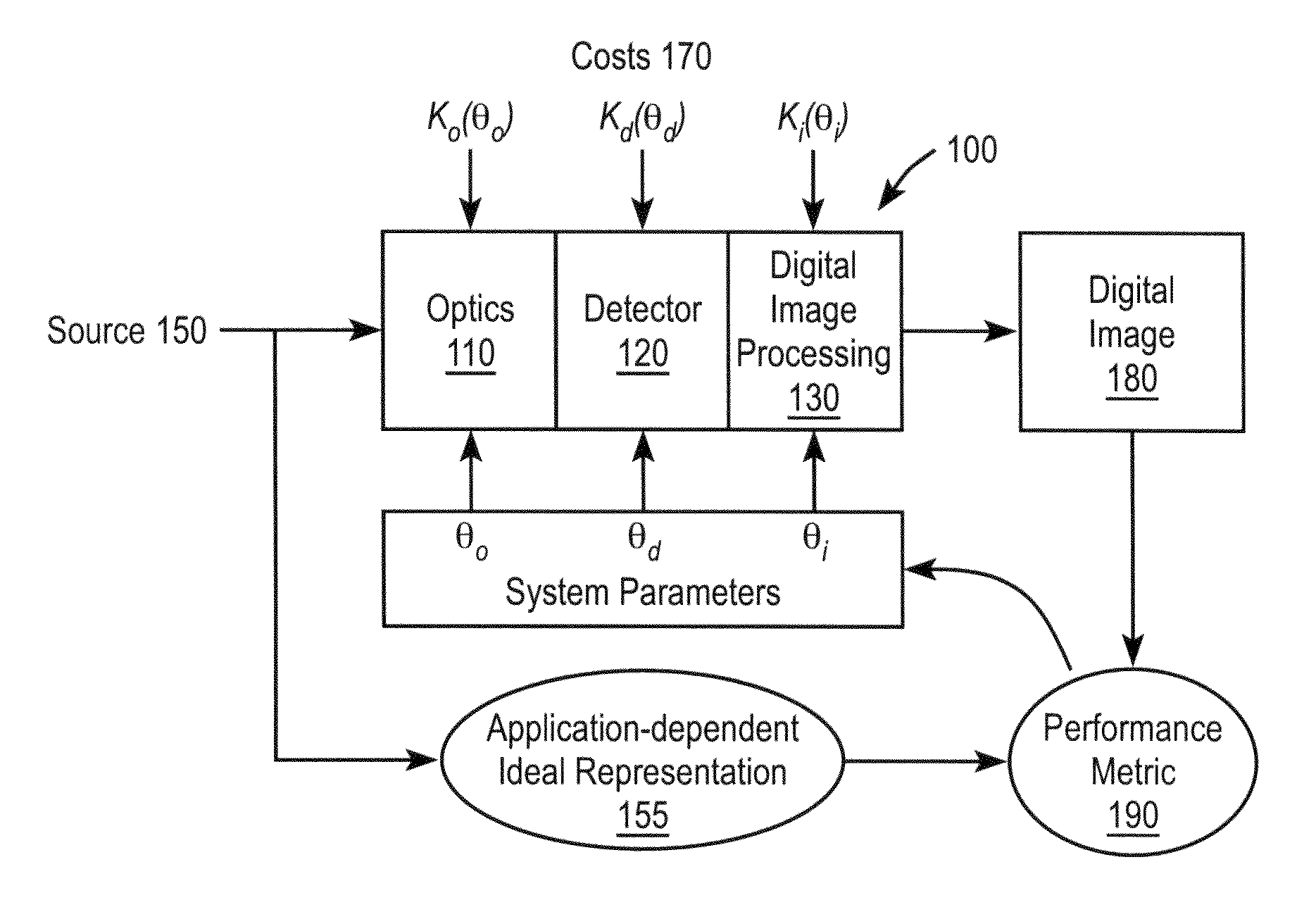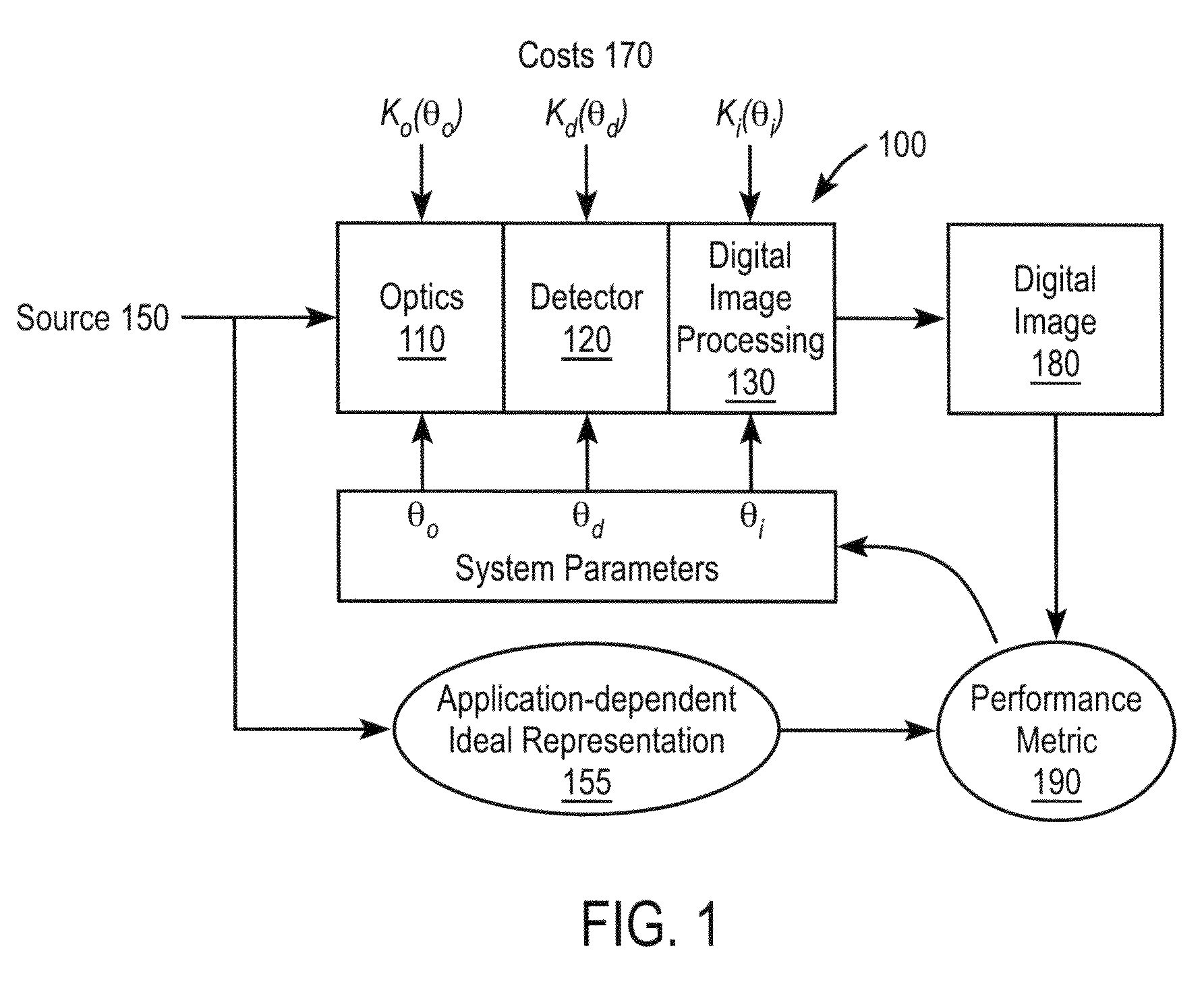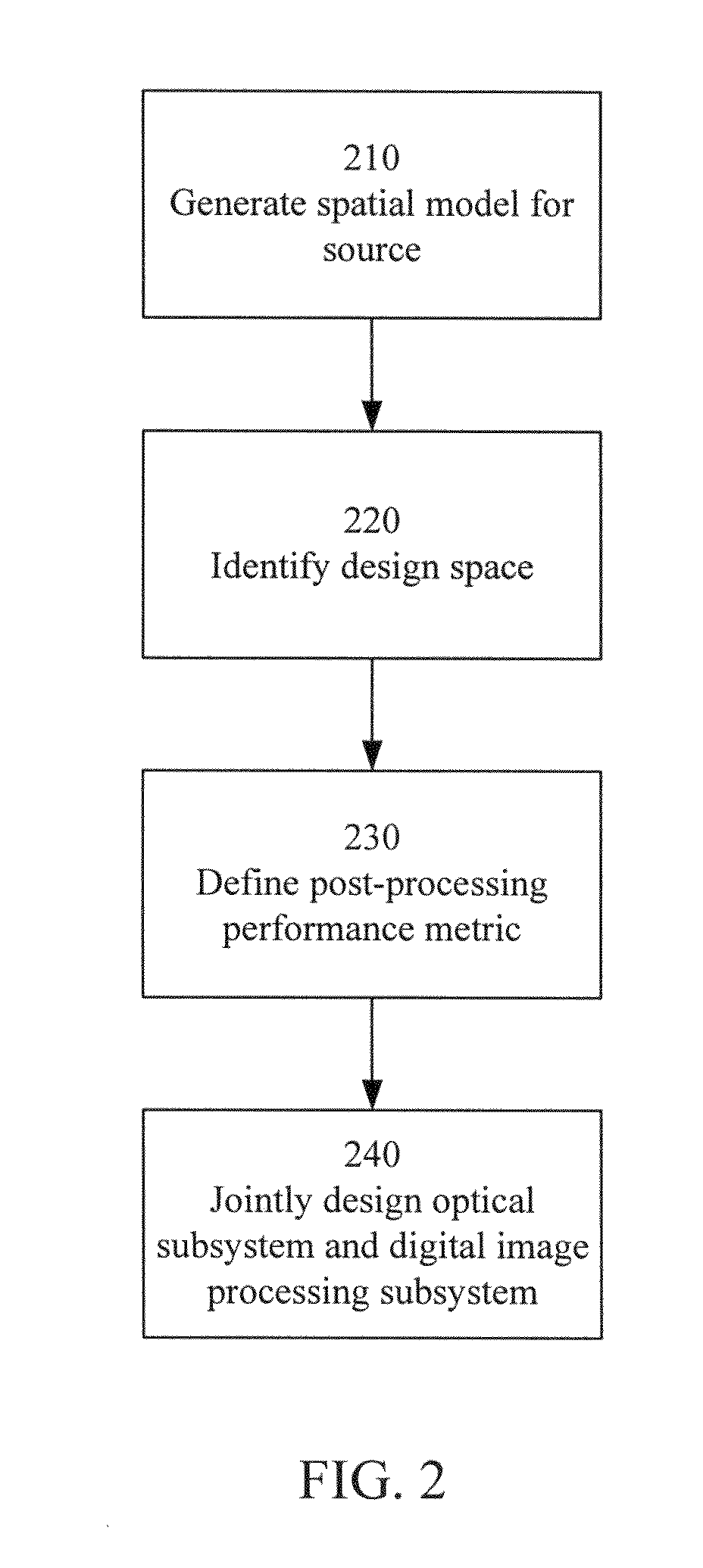End-to-end design of electro-optic imaging systems for color-correlated objects
a color-correlated object and imaging system technology, applied in the field of end-to-end design of systems, can solve the problems of difficult to focus all wavelengths at the same point, difficult to achieve the effect of improving or worsening the effect of color image,
- Summary
- Abstract
- Description
- Claims
- Application Information
AI Technical Summary
Benefits of technology
Problems solved by technology
Method used
Image
Examples
example 1
Web Camera
[0064]As an example, consider a triplet lens systems satisfying the general design requirements for a web-camera imaging system. The requirements for this example system were F / 3.0 or faster, f=4.6 mm, 40 degree field of view, ¼″ sensor with 3.5 micron pitch pixels (i.e. 3.5 micron / 4.6 mm=0.75 mrad angular resolution), <7 mm total track length from first lens surface to sensor (i.e., total length<1.5×focal length), and <5% distortion. The system is designed for a detector having the spectral responses shown in FIG. 15.
[0065]FIGS. 5-9 compare a traditional color-corrected triplet against a triplet system designed using the approach described above. FIG. 5 shows a traditional triplet that is corrected for axial color. All three wavelengths (λ=0.48, 0.55, 0.62 μm) are focused at a single image plane (see also FIG. 4a). The physical layout is shown in FIG. 5a. The optimized design is an F / 3.0 lens system with a track length of 7.0 mm including a single plastic asphere as the t...
example 2
Extended Depth of Field Doublet
[0075]As another example, consider a design based on color correlations following the general design specifications of a VGA cell-phone camera system: F / 2.8 or faster, f=2.4 mm, 60 degree field of view, ⅙″ sensor with 3.5 micron pixels, RGB sensor having spectral responses shown in FIG. 15 in a Bayer pattern. The resulting lens has a chromatic depth of focus ratio (using the 60% definition for the wavelength range) of 11.9. The resulting lens is shown in FIG. 11a, with the optical prescription given below.
TABLE 2Optical prescription for doubletSurfaceTypeCurvatureThicknessGlassSemi-Diameter0STANDARD0.00E+001.00E+045.77E+031STANDARD0.00E+001.99E−014.95E−012EVENASPH−1.03E−011.00E+00POLYCARB5.58E−013EVENASPH−1.05E+001.02E+008.52E−014EVENASPH−1.59E+008.95E−01POLYCARB8.96E−015EVENASPH−1.21E+002.00E−011.15E+006STANDARD0.00E+005.00E−01BSC71.30E+007STANDARD0.00E+003.00E−011.35E+008STANDARD0.00E+000.00E+001.41E+00SurfaceConicp{circumflex over ( )}4p{circumflex ...
example 3
Extended Depth of Field Singlet
[0078]As a final example, extend the concepts above to a single polycarbonate aspheric plastic lens. The lens achieves F / 3.0 with a total track length of 3.8 mm for ±30° field-of-view using a ⅙″ RGB sensor with 3.5 micron pixels. The focal length is 2.6 mm. The lens system is capable of grayscale imaging within a depth of field ranging from 100 mm to infinity. The system was designed for an RGB detector subsystem having the spectral responses shown in FIG. 15. The system has a chromatic depth of focus ratio of 7.6, using the 60% definition for the wavelength range. FIG. 12a shows the singlet, with the optical prescription given below:
TABLE 3Optical prescription for singletSurfaceTypeCurvatureThicknessGlassSemi-Diameter0STANDARD0.00E+009.50E+015.05E+011STANDARD0.00E+005.91E−014.75E−012EVENASPH5.20E−019.31E−01POLYCARB9.56E−013EVENASPH−1.52E−011.55E+008.61E−014STANDARD0.00E+005.00E−01BSC71.27E+005STANDARD0.00E+003.00E−011.36E+006STANDARD0.00E+000.00E+001....
PUM
 Login to View More
Login to View More Abstract
Description
Claims
Application Information
 Login to View More
Login to View More - R&D
- Intellectual Property
- Life Sciences
- Materials
- Tech Scout
- Unparalleled Data Quality
- Higher Quality Content
- 60% Fewer Hallucinations
Browse by: Latest US Patents, China's latest patents, Technical Efficacy Thesaurus, Application Domain, Technology Topic, Popular Technical Reports.
© 2025 PatSnap. All rights reserved.Legal|Privacy policy|Modern Slavery Act Transparency Statement|Sitemap|About US| Contact US: help@patsnap.com



